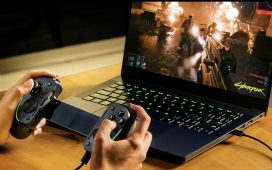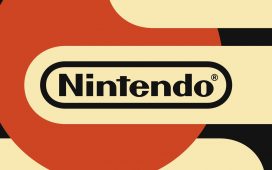Les Seules means “the outsiders.” Sofi Byström, a founding member of the e-sports team who went by “Sophie” online, said as much in an interview with The Associated Press in 2004. “We all knew each other online,” Byström said. “There was a big competition coming up. We were kind of the leftovers, so we just sort of came together.”
Five Swedish and two Danish players — Byström, Anna “aNNa” Nordlander, Malin “Malla” Ohman, Emily “Vixen” Clewett, Sofie “zeleNa” Sandager, Thelma “Queen” Lundin, and Louise “AurorA” Thomsen — officially started playing under the Les Seules name in 2004 for a tournament called the Electronic Sports World Cup. In Paris, the team placed fourth after losing to Chinese team EIBO in the third-place match. Only the first three teams in the women’s event in Paris won a piece of the $18,000 prize pool: $10,000 for first place, $6,000 for second, and $2,000 for third. There was no prize for fourth.
Despite those humble beginnings, the team went on to become something of a mainstream phenomenon that helped shape the competitive gaming scene. Today, women continue to make strides in e-sports. In 2018, StarCraft II pro player Sasha “Scarlett” Hostyn won the Intel Extreme Masters event in Pyeongchang, South Korea, making her the first woman to win a major StarCraft II event. Days later, Kim “Geguri” Se-yeon was signed to the Overwatch League’s Shanghai Dragons as the league’s first female player. Each of these moments in e-sports history have been important milestones, and that’s notable in itself.
Decades have passed since Les Seules’ breakthrough into mainstream media. In 2004, things were different, but the team’s place in e-sports history was no less important.
Les Seules was one of the first women’s Counter-Strike teams — actually one of the first Counter-Strike teams at all — to get noticed outside of the gaming world. But they were not the greatest Counter-Strike team of all time. Lundin told The Verge that they were underdogs, a team that didn’t have the history or experience together that some other squads had. Les Seules did not win money for their surprising performance at the Electronic Sports World Cup. Instead, they found themselves in mainstream media’s spotlight, which was a small, awkward, and sometimes problematic step in creating an infrastructure for women competing in e-sports.
Nordlander told The Verge that Les Seules was her first opportunity with a team that eventually had a sponsor: Nvidia. “That, of course, came with obligations in doing interviews [and] photo shoots, things I had not really been used to in other teams,” Nordlander said. “It was pretty much the same for [the] other girls I was playing with.”
The Electronic Sports World Cup’s first event was in 2003, and only four teams participated. By 2004, that number grew to 16. That quick growth was a testament to the largely untapped desire for women competing in e-sports. But there hasn’t always been the infrastructure that supports women’s growth in the industry. Counter-Strike is unique in that way. It’s one of the only e-sports that has fostered that interest in the game by hosting women’s events — though they’re often few and far between. For years, the Electronic Sports World Cup was the only major women’s event, but it still laid the groundwork for women’s rich influence in the industry. It gave interested players opportunities to see new faces in Counter-Strike and inspire more women to get involved, like Norwegian player Amanda “rain” Smith, who plays on Team Dignitas.
”I mostly only heard about the male teams,” Smith told The Verge. “But I did find out about the ESWC female tournament. It was only one time a year that you could look up to somebody and say, ‘That’s something I could do, too.’ [The infrequency of the events was] almost a little discouraging. But at the same time, you just have to persevere, and it made me really want to do that and compete. That was a turning point for me.”
On a press tour in New York, Les Seules was interviewed by ABC, CNN, and SYNC Magazine, a publication with the tagline “stuff for a man’s life.” The media latched on to the idea of women playing video games and made it a spectacle. SYNC put Les Seules on the cover of its October / November 2004 issue, calling them “The sexy game girls of Sweden” alongside headlines like “Your dream job: Fix chicks’ computers for sex!” and “Bribery! Buy all the stuff you want and keep her happy.” In a multipage spread, the women of Les Seules pushed back on the stereotypes that ran alongside their images. Thomsen, the team’s captain, spoke about using an alias to shield herself from degrading comments about female gamers; Sandager said she was bugged by men who trash talk women online; and a few spoke on not being taken seriously by their male competitors.
”I remember clearly that I was extremely uncomfortable when doing the shooting for SYNC Magazine,” Lundin said. “The hair and the short dress is nothing I usually wear, but yeah — we just went with it anyway. Can’t really explain it.” She added that the editorial became a conflict within the team itself. “We knew that more media time means more sponsors, more sponsors means more tournaments,” she said. “That was the ultimate goal.”
Women’s events had always been contentious in Counter-Strike, and they continued to be into the next era of the game: Counter-Strike: Global Offensive. The argument against exclusive tournaments for women is that there’s little physiological barrier to entry for e-sports. Gender separation may be necessary in basketball or soccer, but it’s not when you’re competing behind a computer. But e-sports, and gaming as a whole, has been male-dominated since its inception. Women haven’t been explicitly barred from entry, but there have always been sociological barriers that discouraged them from playing. Among other reasons are the pressures of being a token representative for your gender and a boy’s club mentality.
Only a small number of aspiring e-sports professionals are going to make it to the top of the field. Men make up a large part of that already small pool of players that are good enough to compete at an elite level because of the social barriers to entry. (For instance, League of Legends’ e-sports has been around for a decade. Of the hundreds of players that have competed, you can count the number of high-level female players on your fingers.) Women’s events are a step toward evening out that pool and creating an infrastructure that encourages women to take the very hard steps necessary to play competitively for a living. “The recognition of gaming in mainstream media was good for the industry and helped it grow,” Nordlander, who left Les Seules before the TV show, said. “And hopefully also got more women into gaming.”
Mayra “IpSa” Perez, a Swedish Counter-Strike: GO player and caster who would eventually join Les Seules in 2008, said that back in 2005, when she started playing Counter-Strike, it was rare to encounter another woman playing the game online. Then she saw Les Seules and another women’s team, Eyeballers, play at DreamHack 2005 in Sweden. “They seemed so good at what they were doing and I wanted to be part of that ‘sisterhood,’” Perez said. “Those female teams [and] players gave me a goal and purpose to why I wanted to keep playing and improve myself within the game.”
Les Seules signed on with Swedish production company Bringiton to create a TV show, PlayUs, in 2006. The team of women would travel the world for 10 episodes in 10 different cities: New York, Las Vegas, Los Angeles, Hong Kong, Tokyo, Bangkok, Kuala Lumpur, Berlin, Paris, and London. In a production deck created after the series was filmed, Bringiton described it like this: “PlayUs follows Les Seules: five Swedish girls who are e-sports stars of Counter-Strike, the ludicrously popular online first person shooter that has rocked the world. Now they’re about to go commando on a ‘gaming tour’ that’s pacy, sexy, and oozes cool.” Guiding the team on this journey was a Counter-Strike player called Miguel Bonnet. After all, “the girls need a firm hand to control them,” the production company wrote. The series was eventually broadcast on MTV.
”[A Swedish production company] had this idea to do a TV show about a female clan trying to make their way into the male scene,” Lundin said. “We were thinking of all the sponsors we could get and all the tournaments we would be able to participate in.” British voiceover artist Lizzie Knight was brought on after filming to write the voice-over script. “The series focused on making the girls ‘look right’ (i.e., hot) as well as honing their gaming skills,” Knight told The Verge. “There was a lot of dressing up in glamorous locations. Bringiton were banking on the fact that more women were getting into gaming, but the series didn’t exactly present Les Seules as role models. It seems to appeal more to teenage boys.”
Lundin said she realized “rather quickly” that the show had little to do with Counter-Strike. The team played the game against top teams around the world, but they were not able to actually train during the trip, nor did they have their gear. Instead, they “trained” by doing things like shooting a music video and learning to box. “We thought we were there to train and play, but instead got to parachute and walk the red carpet,” Lundin said. “We had no idea what we were doing there, but at the same time, it was lots of exciting and fun things to experience. It was a very confusing trip for all of us with different kinds of feelings. Some girls were more upset about the non-playing part than others and that sometimes tore the team a little bit apart instead of making us stronger [like] the show was supposed to be about.”
Lundin added that she thought the show portrayed the team as “complete idiots.” Knight says, “It didn’t lead to another series, which I thought was a shame — we could have broadened PlayUs out a lot and dispelled some stereotypes.” A lot of women in gaming, Les Seules included, aren’t interested in the spectacle of being just that. The nature of the industry can often force women into that role. There are plenty of women in Counter-Strike who don’t want to be female pro players; they just want to be pro players. “We are women who game and compete, but we just want to be recognized as gamers,” Dignitas captain and e-sports veteran Emmalee “EMUHLEET” Garrido told The Verge last month.
Les Seules took an opportunity that would propel themselves (and e-sports) further into mainstream consciousness, even if it meant playing within a sexist system that wanted to make a spectacle out of their existence. But despite that, Les Seules did reach plenty of women in e-sports and empowered women to compete — including Perez, the e-sports hopeful turned pro player who saw Les Seules play in 2005 and joined them in 2008. In her first tournament with the team, the Electronic Sports World Cup Masters of Paris, she won $7,500. “We played versus SK.female,” Perez said. “I remember the crowd… feeling nervous and shaky. We only needed one round left to win. I’d never experienced this before in my life. It was the first time for everything — first big win, first huge stage, huge crowd, a lot of noise, and people cheering for us.”
The industry has come a long way since Les Seules took fourth place in the ESWC in 2004. Pew research from 2017 found that 49 percent of women aged 18 to 29 said they played video games. And in early July, DreamHack held its first women’s Counter-Strike: Global Offensive event, DreamHack Showdown. DreamHack is one of the largest e-sports event organizers, with multiple events and plenty of money passed out each year. For many e-sports games, it’s the largest stage with lots of prestige. Eight teams participated in the event, all vying for a spot for their share of the $100,000 prize pool — the largest prize pool for a women’s event yet. European organization Beşiktaş Esports took first place in the event and earned $50,000 in prize money. But they’ve also qualified for DreamHack Open Rotterdam where they’ll compete against seven other invited and qualified CS: GO teams.
Though there certainly has been growth in the industry, gender parity is still a long way away. That’s evidenced by the response to DreamHack Showdown. It was announced a few months ago to the usual mixed reactions on social media: a lot of people were happy to see DreamHack supporting a women’s e-sports scene with such a rich history, and others don’t think there needs to be a distinction at all. There will always be people who don’t think events like this need to exist and people who don’t want to recognize the importance of women’s success as women in the industry. But given the history, it’s clear they’re doing something important for the community.
”Counter-Strike has the most organized female scene in any competitive e-sports,” competitive Counter-Strike player and Dignitas’ vice president of marketing Heather Garozzo said. “A lot of it is because these women’s events exist.”







